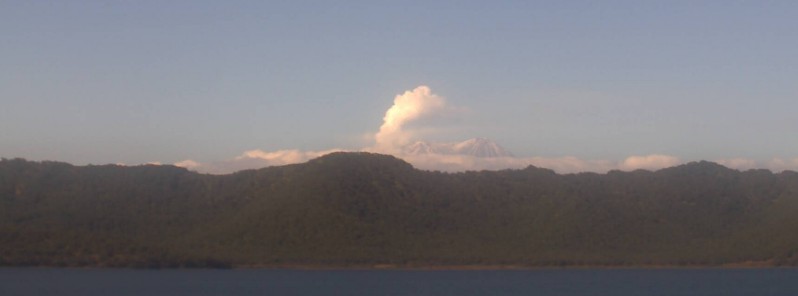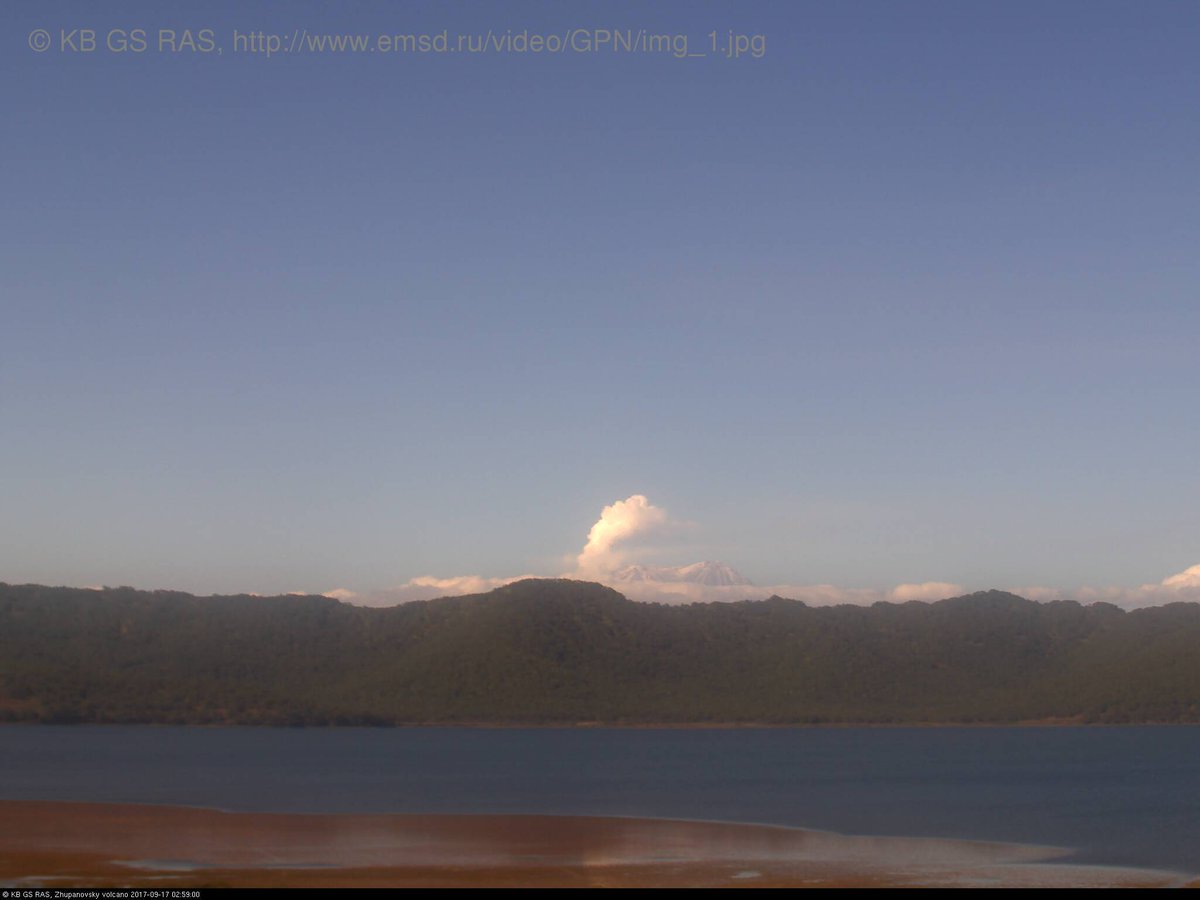Strong explosion at Zhupanovsky, ash cloud to 7 km (23 000 feet) a.s.l.

A strong ash explosion was observed at Zhupanovsky volcano, Kamchatka, Russia at 23:30 UTC on September 16, 2017. According to data provided by the Tokyo VAAC, ash cloud reached a height of 7 km (23 000 feet) above sea level and drifted southwest. This is the first eruption at Zhupanovsky since November 2016.
At 23:41 UTC on September 16, KVERT said it raised the Aviation Color Code from Green to Orange.
By 00:14 UTC on September 17, ash plume was extending about 10 km (6.2 miles) to the east, according to satellite data. It was no longer visible in satellite imagery by 07:05 UTC and the Aviation Color Code was lowered to Yellow.
"Moderate fumarole activity at the volcano continues," KVERT said 07:05 UTC, adding that a gas-steam plume was observed at a height of up to 4 km (13 120 feet) a.s.l.
Ash explosions up to 6 – 8 km (19 700 – 26 240 feet) a.s.l. could occur at any time, the observatory warns. Ongoing activity could affect international and low-flying aircraft.
Tourist organizations are advised against taking expeditions to the area.

Image credit: KB GS RAS
The last eruption of this volcano took place on November 20, 2016 when a webcam recorded ash plume rising to altitudes of 6 – 8 km a.s.l. The activity prompted KVERT to raise the Aviation Color Code from Green to Orange. The conditions were quiet after the eruption and KVERT lowered the Aviation Color Code back to Yellow.
Before that, Zhupanosvky erupted on March 25, 2016, generating a plume of ash that rose to an altitude of 8 km (26 200 feet) a.s.l. An 8 x 10 km (5 – 6.2 miles) ash cloud observed in satellite images drifted about 135 km (84 miles) NW at altitudes of 3.5 – 4 km (11 500 – 13 100 feet) a.s.l.
Webcam watching over Zhupanovsky, as well as other KVERT webcams, can be found at the following link: KVERT/Webcams
Geological summary
The Zhupanovsky volcanic massif consists of four overlapping stratovolcanoes along a WNW-trending ridge. The elongated volcanic complex was constructed within a Pliocene-early Pleistocene caldera whose rim is exposed only on the eastern side. Three of the stratovolcanoes were built during the Pleistocene, the fourth is Holocene in age and was the source of all of Zhupanovsky's historical eruptions.
An early Holocene stage of frequent moderate and weak eruptions from 7000 to 5000 years before present (BP) was succeeded by a period of infrequent larger eruptions that produced pyroclastic flows. The last major eruption took place about 800 – 900 years BP. Historical eruptions have consisted of relatively minor explosions from the third cone. (GVP)
Featured image credit: KB GS RAS

Commenting rules and guidelines
We value the thoughts and opinions of our readers and welcome healthy discussions on our website. In order to maintain a respectful and positive community, we ask that all commenters follow these rules.